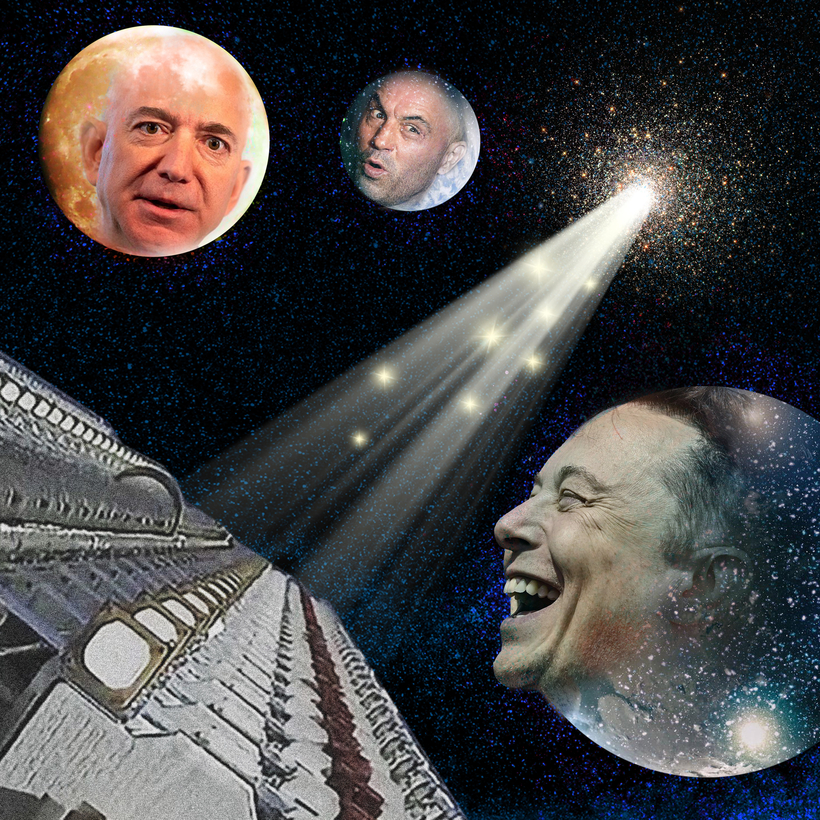When The Washington Post ran a piece last month suggesting that Elon Musk is losing the plot mentally due to his Atlas-like workload, it listed some of the 49-year-old South African’s grandiose personal projects.
There’s the car-maker, Tesla, troubled but still successful. Then his SpaceX rocket company, with its plan to send a million humans to Mars by 2050. There’s Neuralink, developing brain implants so we can communicate with computers just by thinking. Oh, and the Boring Company, with its far-from-boring mission of digging tunnels for every mode of transportation, from walking to Hyperloop trains speeding from city to city at over 700 m.p.h.
No wonder, perhaps, that Musk is prone to erratic statements, even when he’s not smoking dope with Joe Rogan. His work schedule rivals God’s Genesis shtick.
Just one of Musk’s side gigs, which the Post didn’t even mention, seems almost an attempt to upstage God: like some wizard scattering fairy dust, Musk is launching up to 42,000 satellites—15 times the total currently operating in orbit—to bring fast Internet to everyone on the planet.
It’s not just the weed talking, either. Musk invariably walks the walk: his Starlink project is already up and running. More than a thousand 500-plus-pound satellites are in low orbit, 342 miles up, and Starlink’s distinctive “U.F.O. on a stick” dishes are shipping to early adopters.
His work schedule rivals God’s Genesis shtick.
People in rural locations trialing the $99-a-month service are reporting their first fast Internet connections. Aaron Wilkes, in a village in Kent, England, told Britain’s PA news agency last month he is getting a connection speed of up to 215 megabits per second (Mbps); previously, it was as sluggish as 0.5 Mbps. Leigh Phillips, in British Columbia, reported an average 110 Mbps—fine, he told reporters, for a household with working parents, plus kids gaming and video streaming.
Musk has said his planned “constellation” of Starlink satellites, which bounce signals between them using laser beams, will ultimately provide speeds of up to a gigabit per second, with barely any “latency—the time it takes for your Internet signal to travel from your computer to the Web site you’re viewing and back.
This would make the service to rural areas as good as or better than the best fiber service now available in city centers.
Bringing fast, stable Internet to everyone on the planet is a huge deal. It has the potential to revolutionize lives, transform literacy and education, make people in remote places prosperous, break the spell of cities by making remote working possible anywhere, even to undermine authoritarian governments. Rulers of the Chinas and Myanmars of this world will not love Starlink.
But warp-speed Internet for all has its downsides too. Misinformation and scams will spread more widely. Consumption of planet-unfriendly consumer goods could rise as isolated communities discover ordering online. Bringing the fun of consumerism to billions of people currently unable to get online will mean a lot more stuff being made and, ultimately, dumped.
The Starlink system itself also has its disadvantages. The satellites could mess up the sky for astronomers by scattering reflected light around. SpaceX has responded to this swiftly by making the latest satellites to launch less reflective. But Musk’s spacecraft swarm could still add to the problem of space junk.
Starlink dishes aren’t particularly suitable for cities, as they need an uninterrupted view of the sky. In the country, they may also struggle in snow and heavy rain.
For established telecom providers, Starlink could, counter-intuitively, be helpful, relieving them of the headache of trying to bring remote communities online. Their existing fiber and D.S.L. services are still probably doomed, but not because of Starlink. Ten years from now, urbanites will get Internet mostly from 5G cell-phone networks.
Will Starlink raise the not-unscary specter of Elon Musk becoming king of the world, able to turn off our essential communications as he pleases? Perhaps not, as he is up against competition from other tech companies planning similar low-Earth-orbit satellite constellations.
One such project already jostling with Musk’s is called Project Kuiper, named after the Kuiper Belt, a doughnut-shaped swarm of icy structures out beyond Neptune. Kuiper is the brainchild of a Seattle outfit with a decent disruption track record of its own. Goes by the name Amazon.
The world’s richest person, Jeff Bezos, sparring in low Earth orbit with the second richest, Elon Musk: the Star Wars of the 2020s could be a little different from anything George Lucas envisioned.
Jonathan Margolis is a London–based writer. He covers consumer technology for the Financial Times


